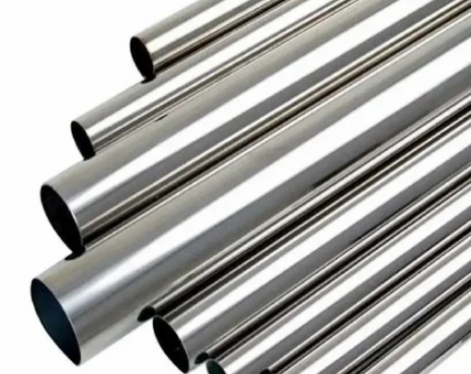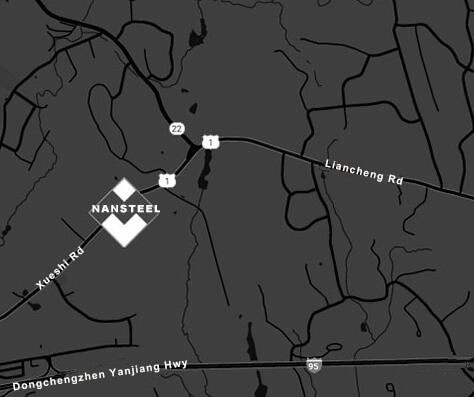Sampling and inspection of seamless steel pipes is an important step in ensuring that their quality meets the standards. This process needs to be carried out strictly in accordance with relevant national standards or industry standards, and ensure the representativeness of sampling and the accuracy of test results. The following are the general steps and precautions for sampling and inspection of seamless steel pipes:
Clarify the purpose and standards of inspection
Before taking samples for inspection, we must first clarify the inspection items (such as chemical composition, mechanical properties, metallographic structure, non-destructive testing, etc.) and the standards (such as GB/T 8162, GB/T 8163, GB/T 3639, GB/T 14975, GB/T 14976, API 5L, ASTM series standards, etc.). Different standards have specific provisions on the sampling quantity, location and method.
Batch Sampling
Batch grouping principle: Generally, seamless steel pipes of the same batch, same furnace number, same specification and size, and same manufacturing process (cold processing or hot processing, same heat treatment state) constitute one inspection batch. The specific batch quantity and rules will vary according to the standard used. For example, some standards may stipulate that each batch of steel pipes is 200, or the sampling base number can be appropriately reduced for large-size steel pipes.
Random sampling: Randomly select a specified number of steel pipes from the batch as sampling objects, usually not less than 2, and the specific number should be referred to the relevant standards.

Sampling location and method
Head and tail sampling: According to standard requirements, samples are usually cut from the head end and tail end of the steel pipe respectively.
Directionality: For some mechanical property tests (such as tensile test, impact test), it may be necessary to take specimens from the longitudinal direction (along the axis of the steel pipe) and the transverse direction (perpendicular to the axis of the steel pipe) of the steel pipe respectively.
Sample preparation
Size: According to the test items and standard requirements, prepare specimens that meet the specified sizes from the cut steel pipe sections, such as tensile specimens, impact specimens (V-notch), flattened specimens, expanded specimens, etc.
Surface condition: The specimen surface should be clean and free of defects that may affect the test results. For some tests, grinding or polishing may be required.
Identification: Each sample should be clearly marked with information such as batch number, furnace number, steel pipe number, sampling location and direction to ensure traceability.
Select a testing agency
Certification: It is very important to choose a third-party testing agency with appropriate qualifications. The testing agency should have the China Metrology Accreditation (CMA) qualification, and some may also need to be accredited by the China Accreditation Service for Conformity Assessment (CNAS). For steel pipes for special equipment, they may also need to have the approval qualification of special equipment inspection and testing agencies.
Professional capability: Investigate the testing agency’s equipment capabilities, technical level, and experience to ensure that it can conduct all the testing items you need.
Credibility and reputation: Choose a testing agency that has a good reputation and credibility in the industry.
Inspection process
Fill in the inspection application form: Fill in the inspection application form in detail, including the inspection unit information, steel pipe product information (material, specification, quantity, implementation standard, etc.), inspection items, contact information, etc.
Provide relevant information: Attach the quality certificate, furnace number, batch number and other relevant supporting documents of the steel pipe.
Sample packaging: The prepared samples should be properly packaged to prevent damage or confusion during transportation.
Send samples: Submit samples and application forms to the selected testing agency.
Confirmation and payment: After the testing agency confirms that the samples and information are correct, it will provide a quotation and an estimated report date, and handle the payment procedures.
Waiting for test results: The testing agency conducts various tests.
Receive the test report: Receive the test report within the agreed time. The report will list the test results in detail and indicate whether it meets the corresponding standards.
Precautions
1. Sampling representativeness: It is necessary to ensure that the samples taken can truly reflect the quality status of the entire batch of steel pipes.
2. Standard compliance: Sampling and inspection shall be carried out strictly in accordance with the national or industry standards.
3. Sample protection: Samples should be protected from contamination or damage during sampling, transportation and storage.
4. Complete records: Keep detailed records of the sampling process, including sampling date, personnel, location, steel pipe number, etc. for traceability.
5. Qualification review: When selecting a third-party testing agency, be sure to carefully review its qualifications and scope of capabilities.
Read more: Marking Method of Seamless Steel Pipe
Clarify the purpose and standards of inspection
Before taking samples for inspection, we must first clarify the inspection items (such as chemical composition, mechanical properties, metallographic structure, non-destructive testing, etc.) and the standards (such as GB/T 8162, GB/T 8163, GB/T 3639, GB/T 14975, GB/T 14976, API 5L, ASTM series standards, etc.). Different standards have specific provisions on the sampling quantity, location and method.
Batch Sampling
Batch grouping principle: Generally, seamless steel pipes of the same batch, same furnace number, same specification and size, and same manufacturing process (cold processing or hot processing, same heat treatment state) constitute one inspection batch. The specific batch quantity and rules will vary according to the standard used. For example, some standards may stipulate that each batch of steel pipes is 200, or the sampling base number can be appropriately reduced for large-size steel pipes.
Random sampling: Randomly select a specified number of steel pipes from the batch as sampling objects, usually not less than 2, and the specific number should be referred to the relevant standards.

Sampling location and method
Head and tail sampling: According to standard requirements, samples are usually cut from the head end and tail end of the steel pipe respectively.
Directionality: For some mechanical property tests (such as tensile test, impact test), it may be necessary to take specimens from the longitudinal direction (along the axis of the steel pipe) and the transverse direction (perpendicular to the axis of the steel pipe) of the steel pipe respectively.
Sample preparation
Size: According to the test items and standard requirements, prepare specimens that meet the specified sizes from the cut steel pipe sections, such as tensile specimens, impact specimens (V-notch), flattened specimens, expanded specimens, etc.
Surface condition: The specimen surface should be clean and free of defects that may affect the test results. For some tests, grinding or polishing may be required.
Identification: Each sample should be clearly marked with information such as batch number, furnace number, steel pipe number, sampling location and direction to ensure traceability.
Select a testing agency
Certification: It is very important to choose a third-party testing agency with appropriate qualifications. The testing agency should have the China Metrology Accreditation (CMA) qualification, and some may also need to be accredited by the China Accreditation Service for Conformity Assessment (CNAS). For steel pipes for special equipment, they may also need to have the approval qualification of special equipment inspection and testing agencies.
Professional capability: Investigate the testing agency’s equipment capabilities, technical level, and experience to ensure that it can conduct all the testing items you need.
Credibility and reputation: Choose a testing agency that has a good reputation and credibility in the industry.
Inspection process
Fill in the inspection application form: Fill in the inspection application form in detail, including the inspection unit information, steel pipe product information (material, specification, quantity, implementation standard, etc.), inspection items, contact information, etc.
Provide relevant information: Attach the quality certificate, furnace number, batch number and other relevant supporting documents of the steel pipe.
Sample packaging: The prepared samples should be properly packaged to prevent damage or confusion during transportation.
Send samples: Submit samples and application forms to the selected testing agency.
Confirmation and payment: After the testing agency confirms that the samples and information are correct, it will provide a quotation and an estimated report date, and handle the payment procedures.
Waiting for test results: The testing agency conducts various tests.
Receive the test report: Receive the test report within the agreed time. The report will list the test results in detail and indicate whether it meets the corresponding standards.
Precautions
1. Sampling representativeness: It is necessary to ensure that the samples taken can truly reflect the quality status of the entire batch of steel pipes.
2. Standard compliance: Sampling and inspection shall be carried out strictly in accordance with the national or industry standards.
3. Sample protection: Samples should be protected from contamination or damage during sampling, transportation and storage.
4. Complete records: Keep detailed records of the sampling process, including sampling date, personnel, location, steel pipe number, etc. for traceability.
5. Qualification review: When selecting a third-party testing agency, be sure to carefully review its qualifications and scope of capabilities.
Read more: Marking Method of Seamless Steel Pipe









